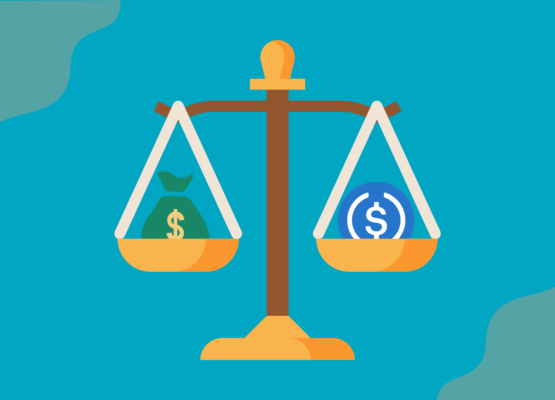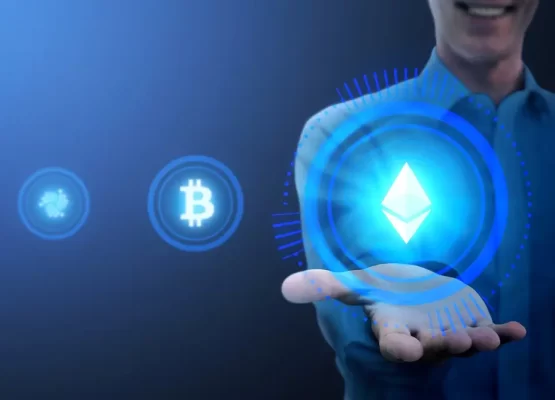Blockchain is an expansive notion, engendering in diverse sectors through its decentralized and translucent essence. Its potential is deep and evolving, with new applications constantly emerging. One such application is tokenization, which has opened up a whole new realm of possibilities within the blockchain ecosystem, including the Binance Smart Chain (BSC). BSC tokens, as cryptographic assets, are at the forefront of this innovation, allowing for seamless transactions and interactions within the BSC network. $MNT is a BSC-based crypto token that facilitates seamless transactions of digital assets on the Binance Smart Chain. As a prime example of a BSC token, $MNT offers a reliable and efficient platform for users to engage in the exchange of various digital assets
Additionally, the rise of NFT mining has further expanded the horizons of tokenization, enabling individuals to mint and trade unique digital assets on various blockchain platforms. In this article, we will delve into the differences between NFTs and crypto tokens, exploring their unique characteristics and providing examples of their use cases in the ever-evolving world of blockchain technology.
What Is Tokenization in Blockchain & Its Ecosystem?
Tokenization is the process of converting real-world or digital assets into tokens on a blockchain. These tokens represent ownership or access rights to the underlying asset, making them easily tradable and transferable. By leveraging blockchain technology, tokenization brings transparency, security, and efficiency to asset management.
It involves the conversion of both tangible and intangible assets into digital tokens on a blockchain network. Through this process, real-world assets such as real estate, artworks, or even stocks can be tokenized, allowing for seamless ownership representation and transferability.
Additionally, intangible assets like intellectual property rights or digital content can also be transformed into tokens, enabling their efficient management and monetization. The emergence of blockchain technology has made tokenization a viable solution for enhancing asset liquidity and accessibility. With the use of BSC tokens, individuals can easily trade and transfer ownership or access rights to various assets. The benefits of tokenization are manifold, including increased transparency, heightened security, and improved efficiency in asset management. By leveraging this transformative approach, blockchain empowers individuals and institutions to participate in new economic models and unlock the potential of their assets in a digitized world.
What Are Crypto Tokens?
Crypto tokens, also known as utility tokens, are a type of digital asset built on a blockchain platform. These tokens serve a specific purpose within their associated ecosystem. For instance, a token might provide access to a decentralized application (DApp) or enable users to participate in a network’s governance. Crypto tokens can be minted, or created, through smart contracts and are typically based on established blockchain platforms like Ethereum or Binance Smart Chain (BSC).
What Are NFT Tokens?
NFTs, on the other hand, are non-fungible tokens. Unlike crypto tokens, NFTs are unique and indivisible, representing ownership of a specific asset or piece of content. NFTs have gained immense popularity in the art and collectibles space, allowing artists and creators to tokenize their work and sell it directly to collectors. These tokens are typically built on blockchain platforms like Ethereum, using standards such as ERC-721 or ERC-1155.
The NFT marketplace provides a platform for buying and selling unique digital assets represented by tokens. Mintforce is one of the latest NFT marketplace provides a platform for buying and selling unique digital assets represented by tokens.
5 differences between Crypto Tokens and NFT Tokens.
- Nature of Ownership: Crypto tokens represent fungible assets, meaning they are interchangeable with each other and hold equal value. On the other hand, NFT tokens represent unique, non-fungible assets, such as digital art or collectibles, with each token being distinct and indivisible.
- Token Utility: Crypto tokens often serve as a medium of exchange or store of value within a blockchain ecosystem. In contrast, NFT tokens primarily focus on representing ownership or proof of authenticity for a specific digital asset.
- Interchangeability: Crypto tokens can be exchanged on a one-to-one basis, as their values are the same. NFT tokens, being unique, cannot be directly exchanged with another NFT token, as their individual characteristics and value differ.
- Token Standardization: Crypto tokens adhere to established token standards like ERC-20 or BEP-20, ensuring compatibility and interoperability across various platforms. NFT tokens, however, typically follow specific standards like ERC-721 or ERC-1155, tailored for non-fungible assets.
- Use Cases: Crypto tokens find applications in various areas like cryptocurrencies, utility tokens, or governance tokens. NFT tokens are predominantly used in digital art, collectibles, virtual real estate, and other areas where uniqueness and verifiable ownership are paramount.
Use case of BSC based Token $MNT
$MNT is a BSC token that provides a seamless avenue for investing in crypto mining, eliminating the need for specialized knowledge or costly equipment. Through partnerships with mining experts in Australia, the United Kingdom, Iceland, and India, $MNT harnesses the power of 100% renewable energy sources like hydroelectric and solar power. By utilizing these sustainable practices, the mining partners efficiently mine popular cryptocurrencies like $BTC. It offers miners the opportunity to buy NFTs using $MNT. It also contributes to a greener and more environmentally conscious future. $MNT enables accessible and eco-friendly crypto mining investment for all.
Guide on buying $MNT/Any token on Coinstore:
- Create an Account: Sign up on Coinstore, provide required information, and complete registration.
- Identity Verification: Follow instructions to verify your identity with necessary documents.
- Deposit Funds: Choose a payment method, deposit funds into your Coinstore account.
- Navigate to The Marketplace(Mr.Mint Website): Find the MNT market on Coinstore, look for the MNT trading pair.
- Place an Order: Decide on market order (current price) or limit order (desired price). Enter desired amount of MNT tokens and review order details.
- Execute the Order: Confirm the order details and execute the purchase. Coinstore will deduct funds and provide MNT tokens.
- Secure Your Tokens: Transfer MNT tokens to a secure wallet. Use Coinstore’s wallet or an external wallet supporting MNT.
- Remember to research, understand risks, and consider market conditions, token performance, and security before investing.
Conclusion
Tokenization has brought a new dimension to the blockchain ecosystem, allowing for the representation of various assets and rights in a digital form. Tokens, including crypto tokens and NFTs, play a vital role in this process, transforming real-world assets into digital representations that can be easily traded and managed. NFT tokens are primarily used for representing ownership and authenticity of unique digital assets, while crypto tokens serve utility purposes within a blockchain network. Crypto tokens serve as utility tokens within the decentralized blockchain network, enabling users to access and participate in various functions and services. On the other hand, NFTs provide a means to tokenize unique digital assets, granting ownership and provenance to items such as artwork, collectibles, and virtual real estate. For instance, platforms like Mintforce provide an NFT marketplace that makes buying and selling of digital assets easy, without sounding promotional, offering users a convenient way to explore and engage with the world of digital collectibles, artwork, and other unique creations.
Understanding the differences between these token types is crucial for navigating the rapidly growing world of blockchain-based digital assets and leveraging their potential within the blockchain ecosystem.




